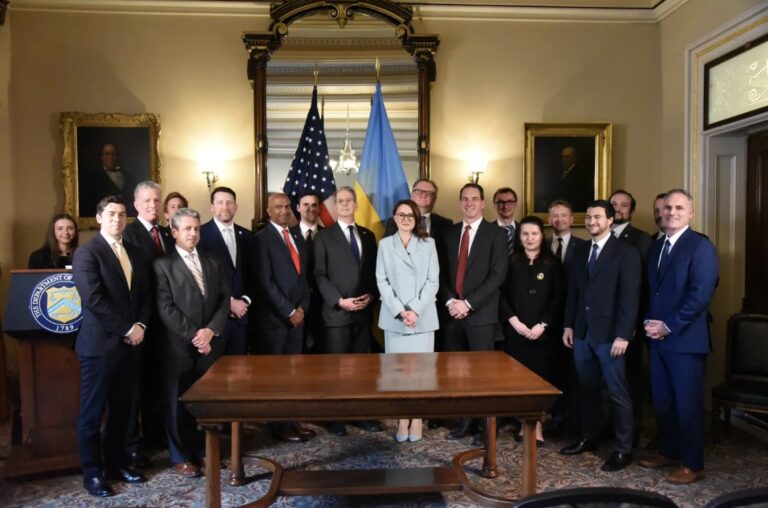- The U.S.-Ukraine mineral agreement is not just economic—it is strategic. It aims to reduce American and Western dependency on China and Russia for critical raw materials.
- Washington sees Ukraine’s mineral wealth as both a long-term industrial asset and a tool of geopolitical alignment, linking Kyiv more deeply to Western supply chains and security architectures.
- For Ukraine, the deal offers post-war recovery opportunities and economic diversification, especially vital amid military destruction and lost eastern territories.
- The risk of Russian attacks on mineral sites is real, and Washington may seek to militarize protection of these regions indirectly—through surveillance, local force training, or private contractor support.
- The agreement echoes Cold War-era mineral alliances, where resource access shaped alliances, influenced U.S. interventions, and underpinned superpower competition.
1. Why This Deal Matters Geopolitically
Ukraine possesses significant reserves of lithium, titanium, rare earth elements, and other critical raw materialsessential for the production of:
- Semiconductors;
- Renewable energy systems;
- Electric vehicle batteries;
- Aerospace and defense components.
Amid growing global tension with China (which controls over 60% of global rare earth processing) and the political unreliability of Russia, the U.S. is aggressively seeking “friend-shoring” opportunities—securing strategic resources from allied or aligned states.
By partnering with Ukraine, Washington achieves multiple aims:
- Supports Ukraine’s sovereignty and post-war viability;
- Secures critical minerals outside Chinese/Russian influence;
- Ties Ukraine’s economy to Western supply chains, solidifying its Western orientation;
- Reinforces the message that Ukraine is not a charity case but a strategic partner.
2. Historical Parallels: Cold War Resource Alliances
This move echoes U.S. Cold War strategy in Africa and Latin America, where mineral access was a core motive behind alliances and interventions, including:
- Zaire (now DRC): Secured cobalt and uranium during the Cold War through support to Mobutu’s regime.
- Chile (1970s): U.S. concerns over copper nationalization contributed to its backing of the Pinochet coup.
- Afghanistan (1980s): While the focus was military, the U.S. also monitored Soviet access to lithium and other resources.
Today’s agreement with Ukraine fits this legacy: securing resources in a frontline state against a rival power, blending commercial and strategic goals.
3. Economic Impact for Ukraine and the U.S.
For Ukraine:
- Foreign investment and tech transfer: U.S. companies will bring expertise and capital needed to modernize extraction and processing industries.
- Job creation: New mining projects will provide employment, especially in safer western and central regions.
- Revenue diversification: Helps Kyiv reduce dependence on grain exports and foreign aid.
For the U.S.:
- Secure supply of rare earths and battery metals
- Domestic industrial support: Enables Biden’s (or Trump’s) reindustrialization and clean tech policies
- Export markets: Creates opportunities for U.S. engineering, equipment, and logistics firms
This agreement fits into the Inflation Reduction Act (IRA) and related legislation incentivizing non-Chinese mineral sourcing for EV and renewable industries.
4. Risks and U.S. Security Options
Many of Ukraine’s mineral-rich areas—especially in the east and south—remain vulnerable to Russian strikes or occupation. The U.S. will likely take indirect steps to protect these assets:
- Deploy satellite surveillance and drone reconnaissance to monitor Russian activity near critical sites
- Support local Ukrainian military units tasked with protecting industrial zones
- Train specialized forces in infrastructure defense
- Consider private contractors for site security in high-risk zones, avoiding direct U.S. troop involvement
This would mirror how the U.S. protected oil and mineral infrastructure in Iraq, Kurdistan, and Afghanistan, without formal military deployment.
5. Broader Strategic Takeaway
- The agreement serves as a hedge against long-term Chinese leverage in the global green transition.
- It further cements Ukraine’s path toward NATO and EU integration, as economic ties become a form of strategic entanglement.
- It tests U.S. willingness to defend not only values but also assets, potentially shaping future military aid or security guarantees.
This U.S.-Ukraine mineral agreement is a strategic alliance masked as economic cooperation. It has the potential to reshape global mineral flows, weaken Russian and Chinese resource leverage, and deepen Ukraine’s role as a pivotal partner in the West’s 21st-century supply chains. But it also risks dragging the U.S. further into the security dilemmas of Ukraine’s contested territories, setting the stage for a new kind of mineral warfare in the shadow of conventional war.


More on this story: A Leadership Crisis: U.S.-Ukraine Talks and the Future of Global Security




